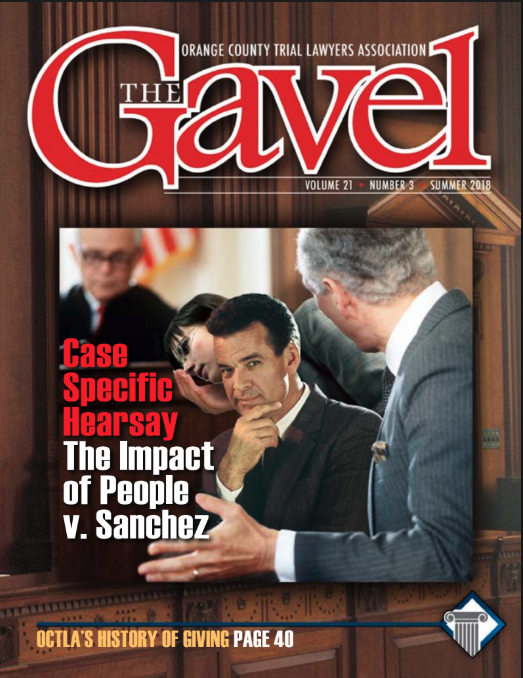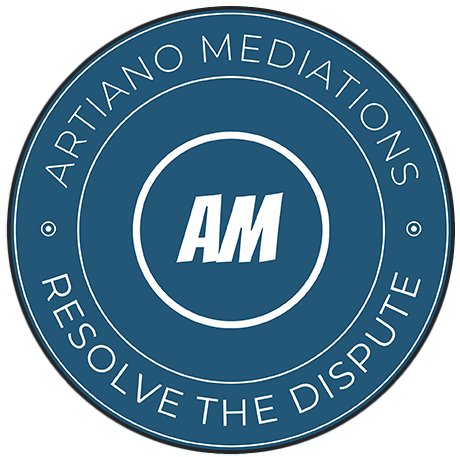Optimizing the Settlement Value of the Single-Plaintiff Employment Case
Strategies for Plaintiff’s Counsel
2018
I feel very fortunate that over my 35-year career, I have had the opportunity to litigate and view employment cases from the perspective of counsel for plaintiff, defendant, and, most recently, as a mediator. It is from this vantage point that I offer the following observations.
Should the Plaintiff Case Be Accepted?
It is axiomatic that employment litigation, handled properly and aggressively, is extremely time consuming and expensive. Even in the single-plaintiff employment case, expended attorney hours alone will routinely exceed 1,000. At times attorney fees may be available by statute. While this may provide an enhanced comfort level for plaintiff’s counsel, and will certainly be a consideration for the defense team in its evaluation of plaintiff’s case, do not overestimate its importance. In most cases attorney fees are not awarded by the court, but are only considered in settlement discussions. Rarely will a defense team consider a settlement which reflects the true value of attorney fees. Thus, it is imperative that serious attention be given to the decision as to whether the case should be accepted in the first place.
From the perspective of plaintiff’s counsel, I believe there are four essential questions to ponder before accepting the case. The first, although hardly unique to employment cases, is whether you have a solvent defendant who can afford to satisfy a judgment on its own or through insurance. If not, the case is not worth accepting. Second is the potential value of the case. Due to the time intensive nature of employment litigation there must be good potential value in order to merit consideration. The third factor is the likability of the plaintiff. I believe that more so than in other genres of cases, whether or not the plaintiff is viewed favorably will heavily influence the prospects of obtaining an excellent settlement or jury verdict. This is because if you can get your case to a jury, the question in their minds is usually “was this person treated fairly?” If the answer is in the negative, the jury will usually find a way to compensate your client. The fourth consideration, interrelated to the third, is whether the case is likely to survive a motion for summary judgment. Obviously, at the very early stages it is much more difficult to make this assessment. Prior to investing substantial resources, however, you should feel comfortable that you have a relatively decent chance of clearing that hurdle. Only after weighing these factors should a decision as to whether the case should be accepted be made.
Fee Agreement
It has always been my general philosophy that if I did not believe a single-plaintiff employment case was worth taking on a contingency, it was not worth taking. In those instances where there is doubt, I have used hybrid fee agreements. These include a reduced hourly fee to be supplemented in the event of a successful result, an hourly fee convertible to a contingency fee at the discretion of the plaintiff, and various sliding scale agreements. The type of fee agreement which you use should be tailored to the specific circumstances of your case.
Preparing the Complaint
From the defendant’s perspective, one of the greatest mistakes that can be made by plaintiff’s counsel is asserting non-viable causes of action against the defendant. Defense lawyers have a field day when this occurs, filing multiple demurrers and motions for partial summary judgment. If the sole focus of your discrimination case is race, why plead violations of other protected areas? This not only leads to attacks on the pleadings, but regularly results in difficult questions to the plaintiff in deposition and trial. You have seen it before: one of the allegations in the complaint is based upon age discrimination, with no real supporting facts. The defendant sends an interrogatory asking plaintiff to state all facts supporting this allegation. The milk toast response is a result of a feeble attempt to support the claim. Ultimately, this leads to painful and damaging cross examination questions at deposition and trial. If the concern that you have in drafting the complaint is that you want to make sure all potential causes of action have been asserted, remember that there will always be the opportunity to amend the complaint should the facts developed so support. An additional potential pitfall is the inclusion of a cause of action which may result in the removal of your case to federal court, where you probably don’t want to be. This can occur in an obvious setting, such as where a federally based claim is asserted or in a more oblique circumstance, such as where a pleading implicates a collective bargaining agreement.
In drafting the complaint, do not underestimate the value of asserting a claim for punitive damages, should the circumstances support such a claim. The impact of doing so may be quite significant. In those cases where there is insurance coverage, multiple issues come into play for the defense team: Is there a need to pay independent counsel? If punitive damages are asserted against an individual, will the carrier bear responsibility? Will independent counsel advocate on behalf of the plaintiff in order to avoid exposure to the client? All of these issues which need to be considered by the defense team strengthen your settlement position.
The Discovery Phase
There are two main points here that I wish to emphasize. First is the importance of the plaintiff’s deposition. As counsel for plaintiff, you only have to prepare one percipient witness, a witness who will affect liability and case value like no other. It is crucial that the plaintiff be properly prepared. Seasoned defense lawyers typically prepare their key witnesses for at least a day before deposition. At least that amount of preparation is needed in order to properly prepare the plaintiff. The plaintiff’s deposition is the time at which defense counsel not only fact finds, but sets up potential motions for summary judgment, attempts to develop as many defense arguments as possible, and to elicit valuable testimony which may serve as the basis for impeachment. Most important, this is the time at which the defense team evaluates the credibility and “likeability” of the plaintiff. With so much at stake, it is crucial that plaintiff be well prepared. The plaintiff should understand the importance of his or her deposition. He or she must resist the temptation to be argumentative, elusive, or overstate facts. While plaintiff need not become an expert in the law, there must be a basic understanding of the theories of the case, and how testimony may be damaging. Discuss with your client all key areas which may be the subject of inquiry, and how answers should be coached. Discuss all key documents and their potential import prior to the deposition.
With respect to witnesses whom plaintiff should depose, counsel should not rely too heavily upon the discovery responses of the defendant in deciding whose depositions should be taken. Take the time to take the depositions of all witnesses within the defendant’s decision-making chain of command. By doing so, you will often find nuggets of valuable information as well as witnesses who are not substantively important, but may be so unlikeable that eliciting their testimony at trial will assist plaintiff’s case.
Finally, bear in mind that the volume of discovery undertaken by plaintiff will often directly impact the defense team’s evaluation of the case. When a significant amount of discovery has been initiated by plaintiff’s counsel, this is an indication to the defense that counsel believes in the merits of the case. In addition, due to the increase in the potential recovery of attorney fees, case value is increased. Conversely, if little effort has been made in pursuit of the claim, the defense questions the resolve of the plaintiff and commitment to the case settlement value is decreased.
Mediating the Employment Case
Mediation offers an excellent vehicle for resolution of employment litigation. In the vast majority of these cases, the plaintiff feels that he or she has clearly been damaged and has suffered a very substantial loss. Typically, the employer believes very strongly that it has acted appropriately and has done absolutely nothing wrong. Emotions often run high. The mediation setting affords the plaintiff an opportunity to vent to a neutral third party. The defendant wants a chance to explain why it has taken the action which it did. Mediation of employment cases sometimes offers the prospect for creative solution beyond compensatory damages. In termination cases, issues such as letters of recommendation, purging of files, and job placement assistance may arise. In cases where plaintiff remains employed, the alternatives may include actions such as alternative job placement within the existing structure, a change of duties or supervisors, or a change in the reporting chain of command. All of these alternatives should receive consideration during the mediation process.
From the plaintiff’s perspective, the decision as to when to mediate revolves around plaintiff’s status: Has the plaintiff been terminated? If so, what are the prospects of future employment? If the plaintiff is still employed with the same employer, does he or she want to remain employed with the same organization?

From the point of view of the defense, the desire is usually for an early mediation, with the driving force usually being the containment of fees and costs. In the absence of insurance, the motivation is even greater. From the perspective of plaintiff however, optimizing the settlement amount requires patience. If you arrive at the mediation unable to show that you can defeat a motion for summary judgment, you are not likely to receive an offer which could be acceptable.
Assuming the timing for a mediation is ripe, and armed with a good case and a solid damages workup by qualified experts, mediation should stand an excellent chance of success. Plaintiff typically comes into the mediation with a goal, a bottom line, and an area subject to discussion which may or may not fall below the “bottom line” figure. The defense team has typically discussed with their client a best case scenario (usually a defense verdict), a worst case scenario, and a likely jury verdict range. As the plaintiff lawyer, you cannot affect the evaluation of the best case scenario, and only marginally can you affect what is viewed to be the reasonable range. You can, however, affect the worst case scenario for the defense team by black boarding hard damages, however tenuous. An important caveat is that in order to maximize settlement value, you must refrain from making a pre-mediation demand which is lower than what you consider to be a “ring the bell” verdict. Once that occurs, achieving any amount remotely close to what you have initially demanded is extraordinarily difficult. A threshold has been set, and in those instances where an insurance carrier is involved, reserves have been established and are unlikely to be altered. Just as important, if the defense team is unable to negotiate a settlement below the amount demanded, they will not be perceived as having been successful.
Consider pressure points for the mediation: Are punitive damages viable? Is adverse publicity feared by the defendant? Are depositions of high ranking members of the defense organization scheduled? Are attorney fees likely to be awarded?
Finally, make sure you are able to blackboard economic damages. Non-economic damages are real and it is generally accepted that the loss of a job is considered to be a major psychological stressor. To be sure, there have been substantial awards of non-economic damages involving cases of discrimination and harassment. Notwithstanding, the defense team (especially the carrier representative) are looking for hard numbers. Make sure these are supported, even if somewhat tenuous. This should be done in advance of the mediation so that the defendants are afforded the opportunity to evaluate the worst case scenarios in the event the case goes to trial.


